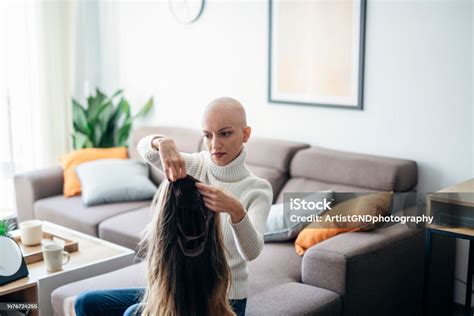Chemotherapy treatment for cancer often causes hair loss, a side effect that can be both physically and emotionally distressing. However, advancements in hairpiece technology have made it possible for patients to regain their confidence and feel more comfortable during this challenging time.

Understanding the Impact of Hair Loss on Chemo Patients
According to the American Cancer Society, approximately 65% of women and 50% of men undergoing chemotherapy experience noticeable hair loss. This loss can occur within days or weeks after treatment begins and is often characterized by thinning, shedding, and bald patches.
Hair loss can have a significant impact on a patient’s self-image and mental health. Studies have shown that it can lead to:
- Reduced self-esteem
- Social isolation
- Depression
- Anxiety
The Role of Wigs in Chemotherapy
Wigs play a crucial role in mitigating the negative effects of hair loss for chemo patients. By providing a stylish and realistic cover for the scalp, wigs:
- Restore the appearance of normalcy
- Boost confidence and self-esteem
- Enhance social interaction and reduce isolation
- Create a sense of control over one’s appearance
Choosing the Right Wig for Chemo Patients
Selecting the right wig is essential for maximizing comfort and satisfaction. When choosing a wig, it is important to consider the following factors:
Material
- Synthetic wigs: Made from synthetic fibers, these wigs are less expensive, require less maintenance, and hold their style well.
- Human hair wigs: Made from real human hair, these wigs are more expensive, but offer a more natural look and feel.
Cap Construction
- Monofilament caps: Create the illusion of natural scalp growth and allow for ventilation, reducing scalp irritation.
- Lace front caps: Feature a lace edge that blends seamlessly with the hairline, providing a realistic look.
- Welded caps: Constructed with a combination of monofilament and lace, offering durability and breathability.
Style
- Short wigs: Ideal for patients with naturally short hair or who prefer a low-maintenance look.
- Medium wigs: Versatile length that can be styled in various ways.
- Long wigs: Provide maximum coverage and can enhance femininity.
Color and Texture
Wigs should complement the patient’s natural hair color and texture. It is advisable to consult with a hair care professional for guidance.
Top Strategies for Chemo Patients Using Wigs
- Wash the wig regularly to maintain its hygiene and longevity.
- Condition the wig to prevent tangles and keep it looking its best.
- Use a wig stand to store the wig and maintain its shape.
- Trim the wig if necessary to remove split ends and maintain its style.
- Seek professional assistance from a wig specialist or hair care professional for any questions or concerns.
Tips and Tricks for Comfortable Wig Wear
- Choose a wig that fits snugly without causing excessive pressure or discomfort.
- Wear a wig cap or liner to protect the scalp from irritation.
- Avoid using excessive adhesive to secure the wig, as it can damage the scalp and hair follicles.
- Take breaks throughout the day to remove the wig and allow the scalp to breathe.
- Use cooling products such as a cold compress or scalp spray to alleviate any discomfort.
Creative Applications for Film Theme Wigs
Beyond their primary use for chemo patients, film theme wigs have also found creative applications in:
- Costume parties and cosplay events: Wigs inspired by iconic movie or TV show characters enhance the authenticity and entertainment value of costumes.
- Fashion and design: Designers and fashion enthusiasts use film theme wigs to create unique and eye-catching looks.
- Historical reenactments: Wigs can transport individuals back in time, enabling them to embody historical figures and experience the fashion trends of different eras.
- Educational purposes: Film theme wigs can be used in classrooms and museums to illustrate fashion and cultural history associated with specific movies or time periods.
Resources for Chemo Patients and Caregivers
- American Cancer Society: https://www.cancer.org/treatment/treatments-and-side-effects/physical-side-effects/hair-loss.html
- Breastcancer.org: https://www.breastcancer.org/treatment/chemotherapy/hair-loss
- CancerCare: https://www.cancercare.org/publications/289-hair-loss-and-chemotherapy
- Chemocare: https://www.chemocare.com/wig-wigs/
- Look Good Feel Better: https://www.lookgoodfeelbetter.org/
Conclusion
Wigs for chemo patients are more than just a cosmetic accessory. They empower individuals to regain their confidence, enhance their well-being, and face the challenges of cancer treatment with greater resilience. By understanding the various types of wigs available, choosing the right one, and following effective strategies for comfortable wear, chemo patients can embrace their unique style and feel a sense of normalcy throughout their treatment journey.
